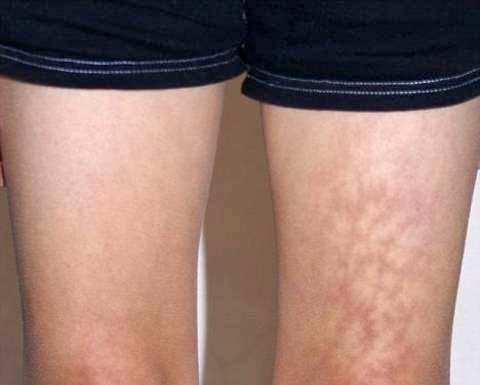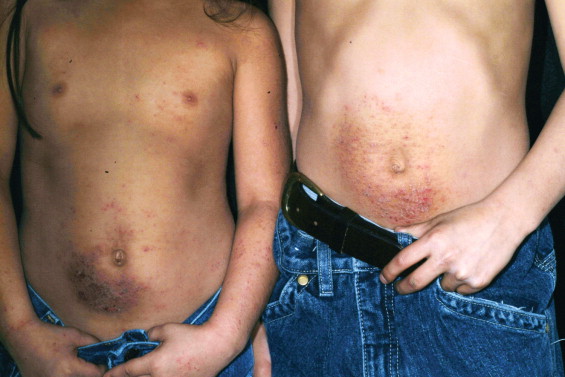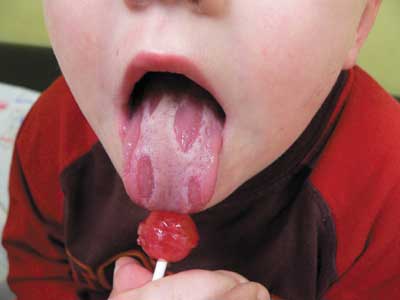Rashes You Can Diagnose
Many of you have seemed to enjoy posts where I let you test your own knowledge on medical topics that are helpful for parents to know. Let’s do it again with a few simple cases of rashes which parents can probably diagnose on their own.
Some of them you can treat on your own, some don’t need any treatment at all and a couple will need the help of the pediatrician.
Just like before, I’ll give you the history that doctors commonly hear when children with this problem are brought to the office and include a photograph to accompany the case. Remember they are composite symptoms and don’t represent any one child that I’ve seen in the office.
5 Common Rashes
Consider the information and think about what your own opinion would be. To see a larger image, click on the photograph. If you’re at a desk top computer, place your mouse over the box and the answer will appear.
If you find that they are easy, that’s great. I’m not trying to sneak anything difficult in on you and it means that you’ve got these issues down pat.
Low Grade Fever and Sore Throat
Your 6-year-old boy developed a low-grade fever a couple of days ago with a mild sore throat. Yesterday, he developed a slightly raised rash on his face and cheeks but it rapidly spread to his arms and now is on his body too. It’s not painful but itches a bit.
You called the doctor and were requested to bring him in for a look-see. They saw the sore throat, found he had a temperature of 101°F and got a culture which led to the diagnosis and treatment.
The diagnosis is: Scarlet Fever
You got that one didn’t you? The rash from streptococcus is known as Scarlatina. That plus a fever and possible heart complications are known as Scarlet Fever. Both are, these days, treated with an antibiotic and the sooner the better. Being associated with a number of other maladies is why physicians are pretty targeted on diagnosing and eradicating any strep throat.
Formerly, Scarlet Fever was known as “Second Disease” and a much bigger problem than it is now in both frequency and volume – however, it’s still an important and dangerous disease. A more complete description can be found here.
Contagious Rash on Cheeks
You relented and decided to enroll your 5-year-old boy in this summer’s week-long church “day camp” where he had a great time. Unfortunately, he’s now got a bright red rash on his face which has spread to his arms and legs. Upon talking with other parents you discover that many of their kids have also had a similar rash.
The diagnosis is: Fifth Disease
This is almost a textbook presentation of what is known as “Fifth disease” (NOT fifth’s) a long-known, highly-contagious viral disease which usually hits children 5 – 10 years old with a typically mild disease and characteristic lacy-looking rash. It’s also known as “slapped cheek” disease because of the redness of the rash on the cheeks.
Caused by Parvovirus B19, we’ve talked about it in more detail before. The rash usually resolves within 1-3 weeks. Children are most contagious before the rash manifests making “epidemics” such as the one at the summer camp difficult to prevent.
Rash on Legs
Your active 11-year-old has a group of friends who have recently become highly “social” on “Facebook.” He told you that “because you won’t buy me a phone so I can text” he needs to follow his friends on the computer – a laptop that he inherited from his big sister now at college.
He came to you having noticed a rash on his upper legs a few weeks ago and you thought that it may be his sports-underwear, although he wasn’t going to let you actually see it, so you changed him to plain cotton boxer shorts . When that didn’t help, you actually got to see the rash and you then tried changing detergents and bath soaps but that didn’t help either . The rash doesn’t itch and he doesn’t have a fever.
Now at the doctor, you see him look at the rash and immediately ask if he uses a computer!
The diagnosis is: Erythema ab igne (“Laptop Rash”)
When pinned down he admits that he’s been on the computer many times a day and for quite a total number of hours; in fact, he seems to do much of his “socializing” via computer posts. The heat and electromagnetic radiation from laptops is concentrated in the upper thighs which creates the rash known with the odd name. Most just call it “laptop rash” and it has a fairly simple treatment – remove the heat source (laptop).
The condition was first described in the medical literature in 2004 and inflicts mostly those under age 26 or so. It takes a while for medical research to identify with new diseases being caused by the environment, but this condition is now being diagnosed quite regularly since its cause has been known. No cases of cancer have been identified from this particular source yet, but other similar conditions have been linked to electromagnetic radiation and it may just be time until long-term complications are known.
Itchy Rash on Thighs and Genitals
For the past few weeks, your 10-year-old boy has had a pruritic abdominal rash that has not responded to over-the-counter topical medications. The rash had appeared just after his 10th birthday party and he began wearing a new belt that his father had made for him. You haven’t changed detergents or soaps and he uses no colognes which was one of the things you thought of because there is a family history of asthma.
In addition, just yesterday his 12-year-old brother told you about a rash in his groin that he contracted this week during his first overnight camping trip with the Boy Scouts. It itches too, and seems to have spread from his penis to his thigh and abdomen. The two boys’ rashes look a little different but when you called the doctor they asked you to bring both of the boys in for an exam.
The doctor was able to tell what was causing the rash quickly once he had examined your boys because they are both very commonly seen. When you ask if they are the same thing he replies: “Yes and No.”
The diagnosis is: Contact Dermatitis
Your 10-year-old son has a classic presentation of “Contact Dermatitis” from an allergic reaction to the nickel in the new buckle that he has begun wearing. It really isn’t a true “allergic reaction” but a sensitivity to nickel that some are more prone to. There may also be a “satellite site” reaction to the original site (known as an “id reaction”) like thickened bumps on the elbows and knees.
Lesions can be treated effectively with topical corticosteroids, but the only cure results from strict avoidance of nickel which may be easier said than done. Parents must buy jeans without snaps or sew in a small piece of fabric to protect the underlying skin. Families should be reminded that wearing jeans with a metal snap for even a few hours in the month poses a risk to reactivate the entire process.
Your 12-year-old, the doctor said, also has “contact dermatitis” which he obtained by brushing up against poison ivy while camping. It’s the same skin problem but with two entirely different causes.
When the first rash a person discovers on their body is located on the penis it usually means that it was contracted when he went to the bathroom in the woods. The oil from the plants can then get on the hands and be spread to other parts of the body. Treatment is to cleanse thoroughly and use steroids either topical or oral if warranted. (Also see here)
Rash on Tongue
Your previously healthy 4 year old girl has gotten into the candy right before supper and you attempt to take it away from her only to find a puzzling “rash” on her tongue. Wondering if it might be an allergic reaction to sugar or something, you look more closely to find that there are raised “lines” on her tongue which seem to form patterns – almost like geography.
She says that there is no tenderness, she doesn’t have a fever, her appetite is good and there are no other symptoms that you can find. You do remember that she has mentioned, only in passing, that her “mouth tingled” the last time she had some potato chips.
A physical examination by her pediatrician would be unremarkable – with the possible exception that when he looked in her throat he would go “ah hah!”
The diagnosis is: geographic tongue
If you’ve never seen this before it can be quite startling; however, it is what we call “idiopathic” (because it just comes and we don’t know why) and will usually resolve without treatment. It is often seen in families so parents, grandparents or other siblings may have it at some point in their lives. In some cases it does give a slight hypersensitivity to salt. It’s something that you may want to get a photo of for the scrapbook.
In small children it could be mistaken for thrush; however, thrush will rarely present in healthy toddlers or school age children and will also produce lesions on the palate and inner cheek and not just be on the tongue only.
–0–
How did you do? We’ll do it again sometime covering other problems of childhood and adolescence.
Advertisement by Google
(sorry, only few pages have ads)






